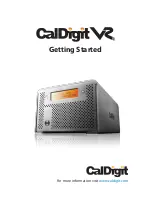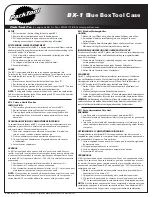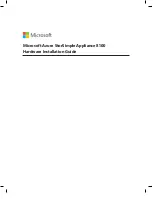
The FILENAME is the name of the file, and SIZE is the number of sectors used for the
file. TYPE gives the parameters of the file. If a file type is PROGRAM, the file is probably
a program or mirror-image data. DISN ARnnn indicates a DISPLAY format file of
VARIABLE length records, with a maximum record length of nnn characters.
INTN ARnnn deSignates an INTERNAL format file of VARIABLE-length records, with a
maximum record length of nnn characters, while a file listed as INTIFIXnnn is an
INTERNAL format file of FIXED-length records, with a record length of nnn characters.
(See "File Processing" in the next section of this manual for an explanation of file
specification.) The "P" column indicates whether or not the file is protected.
If
a "Y" is
present, the file cannot be altered or deleted.
BACKUP DISK - Choose this option to make a copy of a diskette. Copying a diskette
gives you a spare copy of data and programs in case something happens to the original.
(To copy diskettes
if
you are using a single disk drive, select SINGLE DISK
PROCESSING, and follow the instructions given on the screen.)
Note:
How long the backup takes depends on two things: the number of files on the
master diskette and the length of each file. Also, if the copy diskette has not previously
been initialized, the initializing process will reqUire approximately one additional
minute. As a general rule, it takes about
20
seconds to copy 1 1.5 bytes of data.
The following describes the backup process when you have two or three drives. When
you choose this option, the following display appears:
BACKUP DISK
SELECTIVE [YIN)? N
Your response to the prompt SELECTIVE (YIN)? determines if all the files or only
selected files on the diskette are to be copied. If you enter N, all files on the diskette are
copied. If you enter Y, you may choose which files you want to copy.
The prompt MASTER DISK ( 1-3)? appears, requesting the number of the disk drive
containing the diskette that is to be copied. When you answer that prompt, the
diskette's name is filled in.
The prompt COpy DISK ( 1-3)? appears. Your response here determines which diskette
will have the data copied onto it. If the diskette is initialized, its name Is filled in. If it is
not initialized, the message DISK NOT INITIALIZED appears. Then the prompt
INITIALIZE NEW DISK (YIN)? appears. Data cannot be copied unless the new diskette is
Initialized. If the diskette is initialized and has data on it, the data is not erased in the
copy process unless the file on a diskette has the same name as a file on the master
diskette. If so, that file is replaced by the file on the master diskette.
If the sectors USED on the master diskette exceed the sectors AVAILABLE on the copy
diskette, there will not be enough room on the copy diskette. If you want all of the
information on the same diskette, press
CLEAR
to stop the process and insert a new
diskette. Another option is to selectively copy files onto the diskette and then copy the
remaining files on a new diskette.
If you choose to initialize the diskette, the prompt DISKNAME? appears. Enter the name
you want to use for the new diskette. Then the prompt TRACKS PER SIDE? appears
next. Enter the number of tracks, which is usually
40.
24
Summary of Contents for PHP1240
Page 1: ......
















































